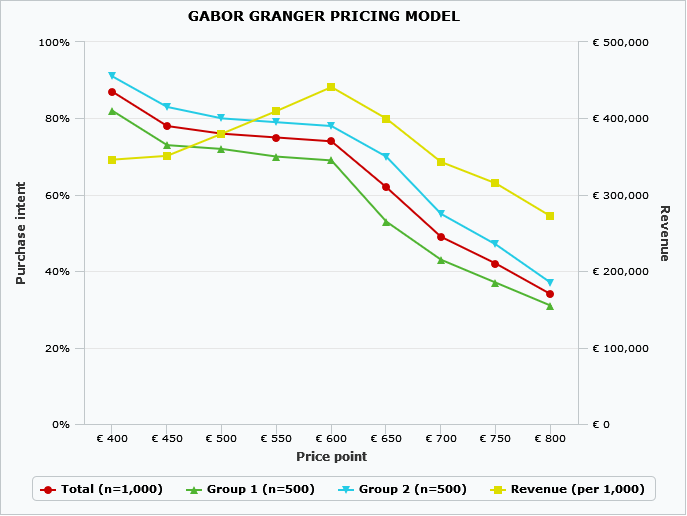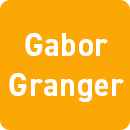Gabor-Granger Method
Price research with the Gabor-Granger method and IfaD
Determine the optimal price using the Gabor-Granger method and IfaD. We recommend one of the alternative survey techniques for direct price inquiry, create the responsive design questionnaire and analyze the data with the price-sales function.
Determining the optimal price with the Gabor-Granger method
The objective of the Gabor-Granger method is to identify the connection between price and sales within a defined target group. The respondent is asked directly about his willingness to pay. This method is very easy to implement and requires a relatively low amount of data acquisition.

Questioning technique of the Gsbor-Granger method
For a series of defined price points, the respondent is asked whether or not he/she would purchase the product at these prices. From all respondents, information is accumulated for each price point, and from this the “demand” is derived. In this way, a price-sales curve is determined. The level of sales can be calculated for each price point, and from this the optimal price point can be determined.
Alternative direct price queries using the Gabor Granger method
- Monadic price query: each survey participant is shown just one price and asked about his or her willingness to buy.
- Randomized price query: each survey participant is presented with a range of prices and asked whether he/she would buy the product at those prices (approx. 5 to 10 prices).
- Systematic price query: each survey participant’s exact price limit is determined.
The advantage of the monadic Gabor-Granger method is that the price points do not influence one another. This makes the monadic method more realistic. However, very large samples are required in order to attain reliable results.
By contrast, the information density of the randomized query is higher and fewer cases are required. The price points are randomly shuffled before they are presented in order to keep the loss of validity resulting from reciprocal influences as low as possible.
The highest information density per respondent is gained by systematic price querying, as the following example shows.
Advantages and limitations of price research with the Gabor-Granger method
Nevertheless, the Gabor-Granger method provides key information on monetary value as perceived by the target group, and it is particularly well suited for situations in which there are no direct competitors (such as e.g. information services of mobile phone providers or online navigation services from automobile manufacturers). In addition, the survey effort is low, and the subsequent price analysis is not complex.
One drawback of the Gabor-Granger method is that it fails to consider the competitive situation in the marketplace. If a product is “bought” by 50% of the sample at a particular price, this figure will almost certainly be unattainable in a real-world situation. The product will also have to share the market with its competitors, whose products will also be accepted by a portion of the target group at their market price.
In addition, the objective is easy for the respondent to understand and therefore tempts to tactics.



